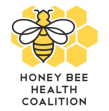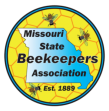A Year in Beekeeping
Below is a suggested checklist of activities for the beekeeper.
Sourced from the Backyard Beekeepers Association.

Beekeeping is Local
Weather, climate, neighborhood and even the type of bees will influence the activities noted below.
Use the calendar below to understand the major tasks for the beekeeper each month, along with an estimate of the time needed to keep your bees healthy. Keep in mind this is just a guide, each season is different, checking the hive is the only way to know what tasks you need to perform.
JANUARY
FEBRUARY
MARCH
APRIL
MAY
JUNE
JULY
AUGUST
SEPTEMBER
OCTOBER
NOVEMBER
DECEMBER
BECOME A MEMBER TODAY!
We can't wait to hang out with you and talk bees. By joining the EMBA you help support bees and beekeeping programs in the St. Louis Region. Membership has many benefits and you can take advantage of these by paying a low annual fee today.
Want to learn more? Explore your options
About Beekeeping
About EMBA
EMBA Events
Membership Benefits
ABOUT EMBA
Located in St. Louis, Missouri, the Eastern Missouri Beekeepers Association (EMBA) is a volunteer-based organization that trains beginning and advanced beekeepers, promotes beekeeping within the region; and provides networking opportunities for beekeepers, old and new. Educating beekeepers for the last 86 years!
Wyoming Street
St. Louis, MO 63118
314-451-2335
Copyright © 2013-2023.
All rights reserved.
Eastern Missouri Beekeepers Association.



